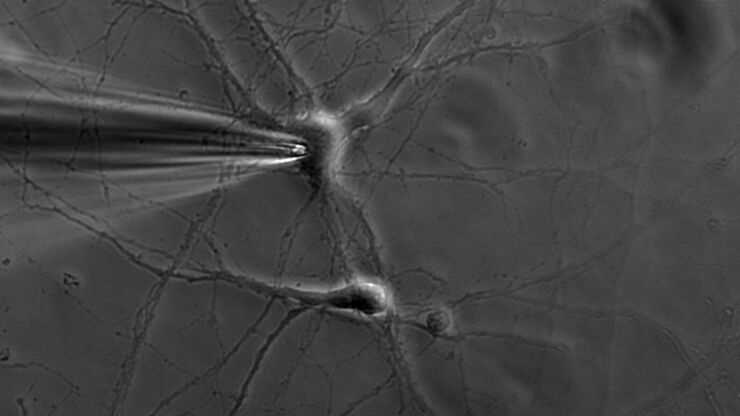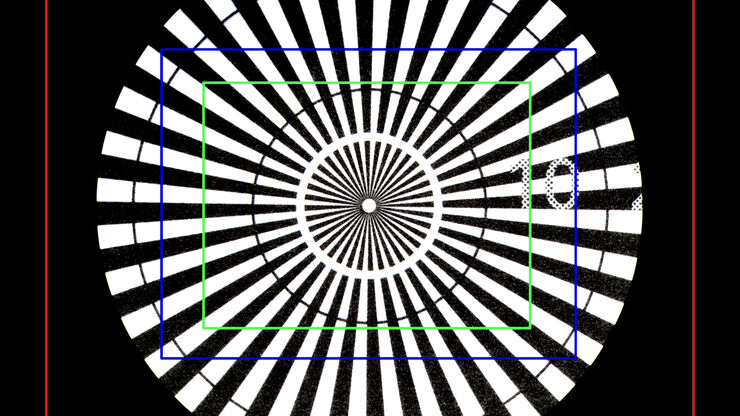Filter articles
标签
产品
Loading...
![[Translate to chinese:] Area of a printed circuit board (PCB) which was imaged with extended depth of field (EDOF) using digital microscopy. [Translate to chinese:] Area of a printed circuit board (PCB) which was imaged with extended depth of field (EDOF) using digital microscopy.](/fileadmin/_processed_/e/e/csm_PCB_imaged_with_EDOF_using_digital_microscopy_228d815bd1.jpg)
如何形成清晰的图像
在显微镜检查中,景深常被看做经验参数。在实际操作中,会根据数值孔径、分辨率和放大率之间的相关性确定该参数。为了获得最佳视觉效果,现代显微镜的调节设备在景深和分辨率之间实现了最佳平衡,这两个参数在理论上呈负相关。
Loading...
![[Translate to chinese:] Microstructure of a hard metal with 10% cobalt which is used for heavy-duty tools. [Translate to chinese:] These images show the microstructure of a hard metal with 10% cobalt which is used for heavy-duty tools. The large increase in magnification of the right image (compared to the left) has a risk of being outside the useful range or, in other words, empty magnification.](/fileadmin/_processed_/d/b/csm_Microstructure_of_a_hard_metal_which_is_used_for_heavy-duty_tools_69233d4576.jpg)
当心“无效”放大率
在一个最简化的情况,光学显微镜由一个靠近标本的透镜(物镜)和一个靠近眼睛的透镜(目镜)组成。显微镜放大率是两个显微镜透镜系数的乘积。比如,40倍物镜和10倍目镜可以得到400倍放大率。
Loading...
![[Translate to chinese:] Multicolor TauSTED Xtend 775 for Cell Biology applications that require nanoscopy resolution for multiple cellular components. Cells showing vimentin fibrils (AF 594), actin network (ATTO 647N), and nuclear pore basket (CF 680R). [Translate to chinese:] Multicolor TauSTED Xtend 775 for Cell Biology applications that require nanoscopy resolution for multiple cellular components. Cells showing vimentin fibrils (AF 594), actin network (ATTO 647N), and nuclear pore basket (CF 680R). Sample courtesy of Brigitte Bergner, Mariano Gonzales Pisfil, Steffen Dietzel, Core Facility Bioimaging, Biomedical Center, Ludwig-Maximilians-University, Munich, Germany.](/fileadmin/_processed_/5/4/csm_Triple_color_fixed_sample_TauSTED_Xtend_2_3_695f805a53.jpg)
STED样品制备指南
这份指南旨在帮助用户优化受激发射损耗(STED)纳米成像的样品制备,特别是在使用徕卡微系统的STED显微镜时。它提供了单色STED成像用荧光标记的概述,并对其性能进行了评级。
Loading...

How to Prepare Samples for Stimulated Raman Scattering (SRS) imaging
Find here guidelines for how to prepare samples for stimulated Raman scattering (SRS), acquire images, analyze data, and develop suitable workflows. SRS spectroscopic imaging is also known as SRS…
Loading...
![[Translate to chinese:] Molecular structure of the green fluorescent protein (GFP) [Translate to chinese:] Molecular structure of the green fluorescent protein (GFP)](/fileadmin/_processed_/a/c/csm_Fluorescent-Proteins_5a50f9b8af.jpg)
荧光蛋白简介
本文概述了荧光蛋白及其光谱特性。随着 20 世纪 50 年代末荧光蛋白的发现,荧光显微技术发生了巨大变化。它始于 O. Shimomura 和来自水母(Aequorea victoria)的绿色荧光蛋白(GFP)[1]。后来出现了数百种 GFP…
Loading...

How Marine Microorganism Analysis can be Improved with High-pressure Freezing
In this application example we showcase the use of EM-Sample preparation with high pressure freezing, freeze substiturion and ultramicrotomy for marine biology focusing on ultrastructural analysis of…
Loading...

什么是膜片钳技术?
离子通道的生理学一直是神经科学家感兴趣的一个重要话题。诞生于1970年代的膜片钳技术开启了电生理学家的新时代。它不仅可以对整个细胞进行高分辨率电流记录,还可以对切下的细胞膜片进行高分辨率电流记录。甚至可以研究单通道事件。然而,由于需要复杂且高灵敏的设备,广泛的生物学背景和高水平的实验技能,电生理学仍然是最具挑战性的实验室方法之一。


![[Translate to chinese:] Neurons imaged with DIC contrast. [Translate to chinese:] Neurons imaged with DIC contrast.](/fileadmin/_processed_/3/1/csm_Neurons_imaged_in_DIC_8186d00fbe.jpg)
